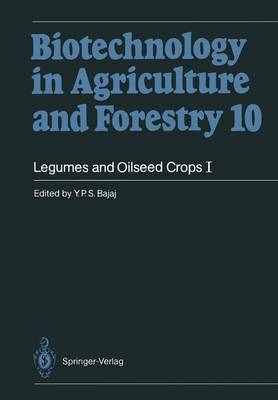Legumes and oilseed crops are a rich source of protein and energy. The major objectives in grain-legume breeding are to increase grain yield, protein quantity and quality and digestibility, and to decrease toxic fac- tors, seed hardness and cooking time. Similarly, oilseed crops such as brassicas and peanut share somewhat similar genetic improvement goals, but suffer from susceptibility to a number of pathogens and diseases. In spite of the best efforts through conventional breeding, their yield has been virtually static, with no significant breakthrough. The lack of genetic variability in the base population has been considered to be a major limiting factor for the slow progress made in the improvement of these crops. The desired goals can be achieved by incorporating addi- tional genetic variability in the existing germplasm. The protein and oil contents which are genotypically oriented can be enhanced further by suitable crosses. In this regard, progress made during the last decade, in the area of in vitro manipulation and recombinant DNA technology, holds promise for the improvement of these crops. Among the oilseed crops, Brassica spp.
, soybean and sunflower have been well studied, wherein haploids, somaclones, somatic hybrids, cybrids and transformed plants have been produced. Oilpalm is one of the best examples where micropropagation is being commercially prac- ticed. Regarding legumes, though there is extensive work on forages, such as Medicago and Trifolium, much needs to be done on food legumes.
- ISBN13 9783642744501
- Publish Date 10 December 2011 (first published April 1990)
- Publish Status Active
- Publish Country DE
- Publisher Springer-Verlag Berlin and Heidelberg GmbH & Co. KG
- Imprint Springer-Verlag Berlin and Heidelberg GmbH & Co. K
- Edition Softcover reprint of the original 1st ed. 1990
- Format Paperback
- Pages 682
- Language English
